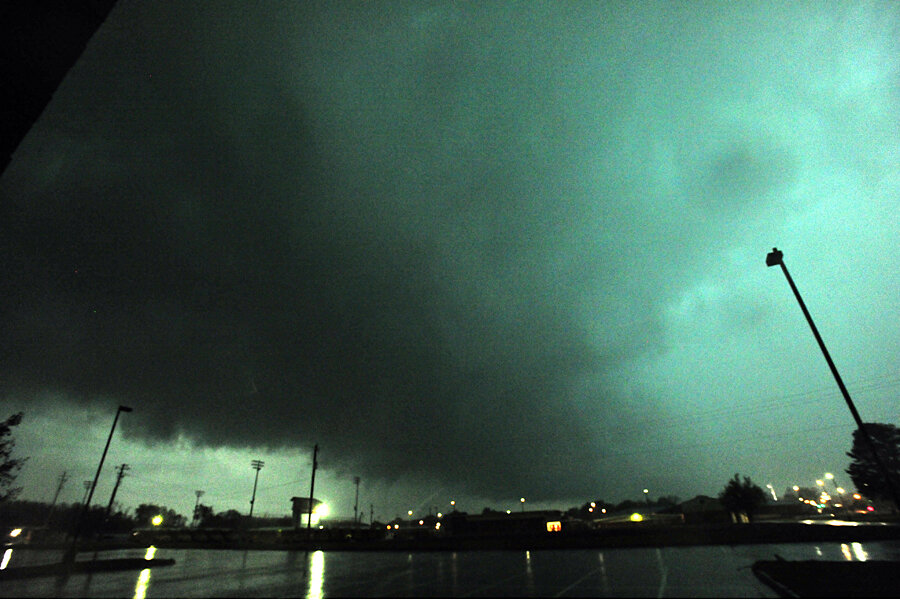Threat of tornadoes hangs over Southeast for third straight day
Loading...
Almost a quarter of the US population remained on Tuesday under the threat of tornadoes and hail-spewing thunderstorms, as a lethal storm system of vast proportions menaced most of the southeastern United States for the third day straight.
Overnight, the death toll from the storm, which had splintered homes and flung around cars, reached 29 people, according to CNN. Most of the deaths occurred Sunday, when the storm barreled through Arkansas and surrounding states. Fourteen people were killed in Arkansas – 10 of them in the towns of Vilonia and Mayflower – and two people were killed in Iowa and Oklahoma, according to CNN.
On Monday, eight people were killed in Mississippi, where at least a dozen tornadoes touched down, according to The New York Times. Two people were also killed at a trailer park near Athens, Ala., another person died in Tuscaloosa, Ala., and two more lives were lost in Tennessee, according to CNN. Dozens upon dozens of people were injured, but exact figures were not yet available, news outlets reported.
On Tuesday morning, upwards of 480,000 square miles of the US, home to about 74 million people, was still under “moderate” or “slight” threat from the storm, according to the National Weather Service.
Western Alabama and eastern Mississippi were under the severest threat on Tuesday, with several tornadoes and numerous “long-lived supercells” bearing large hail projected to rattle the area from Tuesday afternoon until as late as Wednesday morning. The National Weather Service’s storm warning for the two states describes a juggernaut of a storm system waxing and waning in fitful bursts over the Gulf region throughout the next 24 hours.
Parts of Georgia, which is under a state of emergency, were also under a severe thunderstorm warning from about 9 a.m. Tuesday until later in the morning, with quarter-sized hail and 60 mile-per-hour winds expected to pummel the state.
“This is a dangerous storm,” read the National Weather Service warning for central Georgia. “If you are in its path ... prepare immediately for damaging winds ... destructive hail ... and deadly cloud to ground lightning.”
The rest of the Southeast, as well as parts of the mid-Atlantic and Northeast, was under threat of weather, with tornadoes and major thunderstorms possible in central North Carolina and throughout the Appalachian region. Tornadoes in the Ohio Valley and Great Lakes area could also “not be ruled out,” according to the National Weather Service.
On Tuesday, towns already hit were facing the grim slog of sifting through the rubble of what used to be in large part working-class communities of churches, Main Streets, and schools. At about 3 a.m. Tuesday, the National Weather Service issued a civil emergency notice for Etowah County, Ala., asking the public to keep out of the area while rescue workers navigated debris and downed power lines, searching for the missing.








